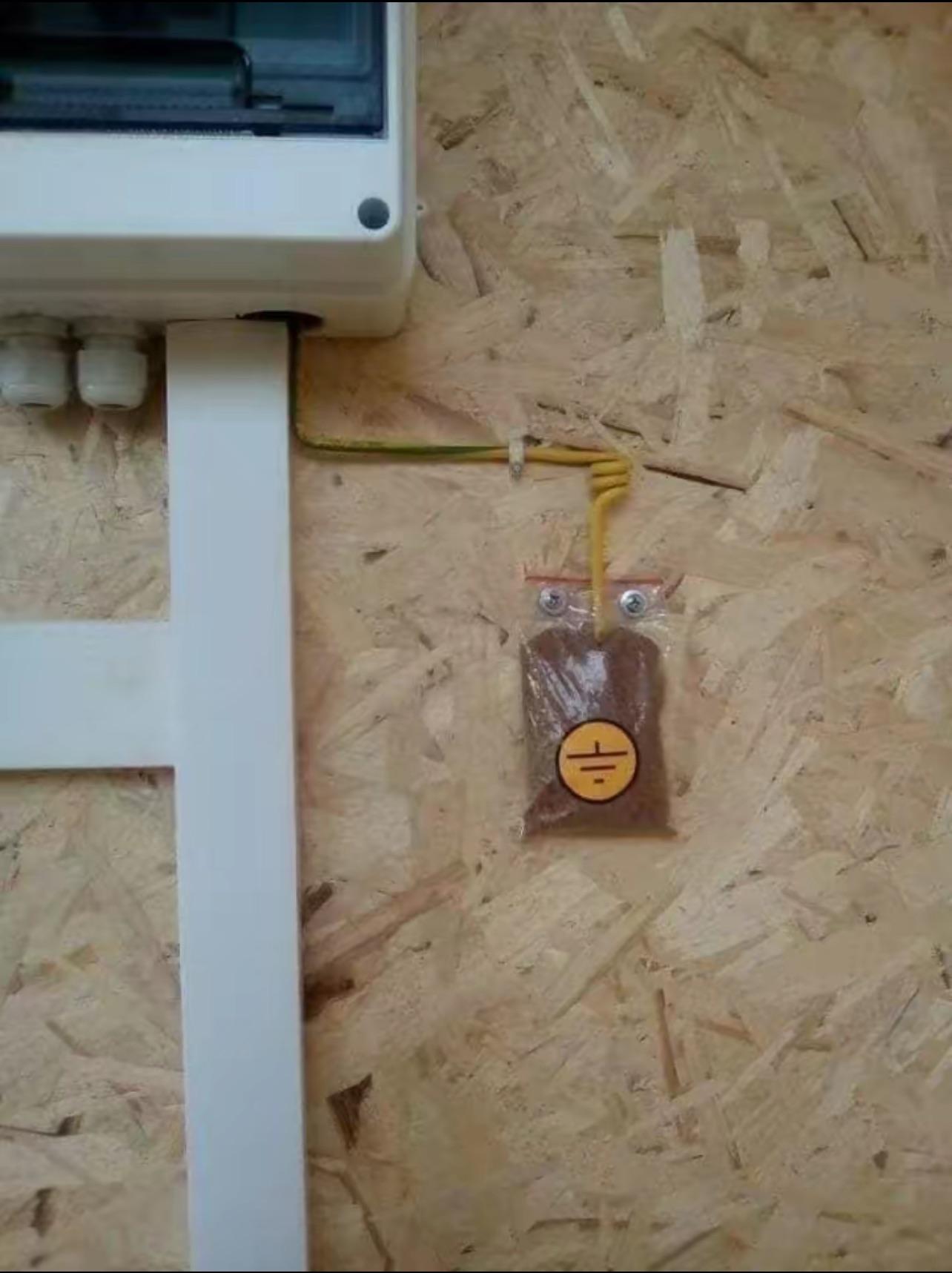ISO - Incredible Solutions Only
Anything is possible if you are creative enough. Who needs ISO/OSHA/DIN standards or safety precautions?
Oh my God, I haven't thought of the jargon file in a decade at least. Thank you for the reminder.
I fucking love that story.
Remember, folks, always add an inductor before the ground. That will improve its functionality.
High-Q advice right here
This should work, Pokemon taught me that ground is immune to electric
The bag is even looking like it’s thinking “WTF?”
i thought those were googly eyes for a second.
This only works if the dirt is from Transylvania.
Joking aside, even if this were running to the literal ground, it would probably still be wired incorrectly. As I understand it, ground is supposed to be bonded to neutral at the service. Running ground to the earth could end up being dangerous.
I'm not an electrician, though. If you aren't either, you should get one to at least check your setup.
You’re thinking of AC ground. There’s also DC ground and RF ground.
I know next to nothing about RF, but does anyone actually run DC directly to earth?
Kinda. AC: https://en.wikipedia.org/wiki/Single-wire_earth_return DC: https://en.wikipedia.org/wiki/Pacific_DC_Intertie
I’m pretty well outside my wheelhouse now. I’m a ham and I’m learning about electricity. I’m certain others can explain it better than me. The image posted is a joke, that type of ground (dirt in a baggie) wouldn’t be helpful for AC or DC. I suppose it could change the resonance a bit as RF ground but it’s obviously not connected to an antenna system here.
Huh! I was aware of SWER, though not the name of it. But the DC Intertie is really interesting! I was under the impression that long distance DC is bad, but turns out it has some real advantages over AC.
The image posted is a joke
I did at least understand that much ;)
Naah, it's actually both. Like other said, you wire ground to neutral, so in situation where metal body of any machine gets into contact with live wire your fuses break instead of killing you when you touch it. However you also have to think about electrostatic buildup from the environment which is why you have rod planted into the ground.
If it isn't eventually connected to the actual ground then it isn't a real ground wire. It's a failsafe path so technically hot / neutral by themselves are sufficient for things to work but yes, ground should connect to the Earth. It's just usually at a single point near where the utility company has their meter.
Both neutral and ground are eventually connected to earth, to prevent lightning strikes from causing destruction on the rest of the grid (and, as far as I know, there's no other need for earthing). But the "ground" circuitry in your home should never be connected to earth. The whole point of having a ground is so that if metal casing becomes hot, the easiest path is back through a circuit breaker. If you connect your ground circuit to earth, it can bypass the breaker and hurt someone.
Again, not an electrician, consult a professional, etc etc.
Circuit breakers are on the hot lines, there isn't a case where high currents "bypass the breaker" (except for a bad install, which for this specific scenario wouldn't have anything to do with whether the neutral is connected to earth or not).
AFCI and GFCI breakers will care about the return path, but that is in addition to normal circuit breaker "does this exceed the current limit" behavior. And it is a very important reason not to connect the neutral to ground at the appliance level
Good to know
Nope, the ground is supposed to be grounded.
The neutral is supposed to go into your electricity provider without touching anything, but the ground is supposed to be grounded as often as you need.
So, with the ground grounded?
Yes, and with the neutral connected to ground at the service entrance
Technically I believe it's ground and neutral are bonded at the "first point of disconnect"
If you have a disconnect switch outside after the meter that's the only point where ground and neutral are bonded together.
If you have no disconnect and the meter feeds directly to your main breaker panel ground and neutral are bonded in the main panel but not in any sub panels
Very helpful clarification, thank you.
You mean outside of the picture? Because it goes directly to the service without connecting on anything at your figure.
You should absolutely not connect the neutral to the ground in any part of your installation. The service provider does ground it somewhere, but you should not.
No, I mean where the white neutral wire connects to the main bonding jumper on the panel in the right side of the image.
I'm not sure where we are missing each other here. My reference is NEC in the US, are you in a different part of the world?
They are connected though. Maybe outside of your system, maybe inside of your system, but the point is neutral and ground are connected. Idea being if any metallic casing gets into contact with live wire your fuses break before you can touch the casing and get electrocuted.
This is probably a training setup for students.
